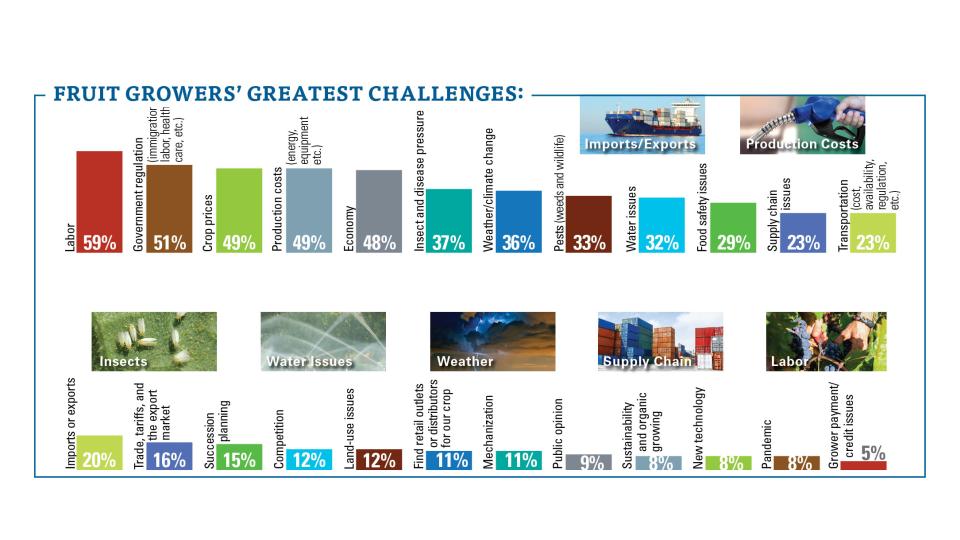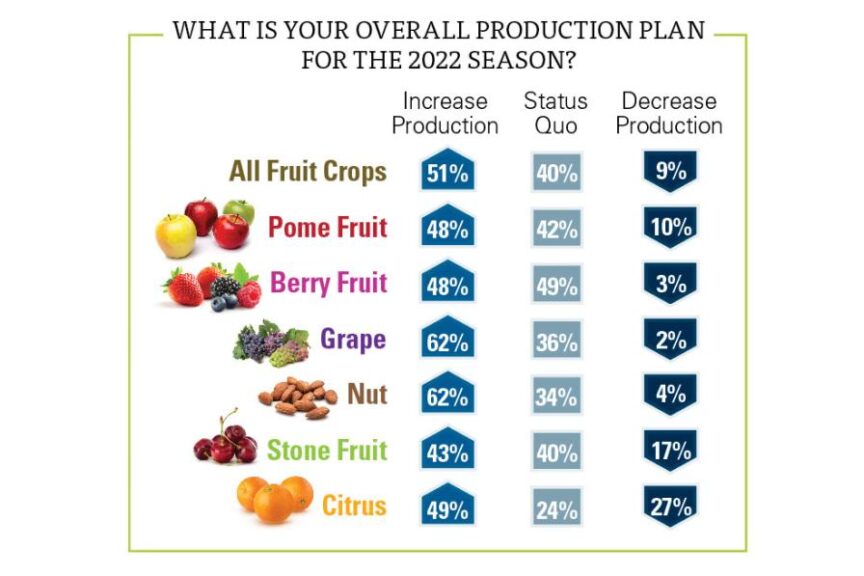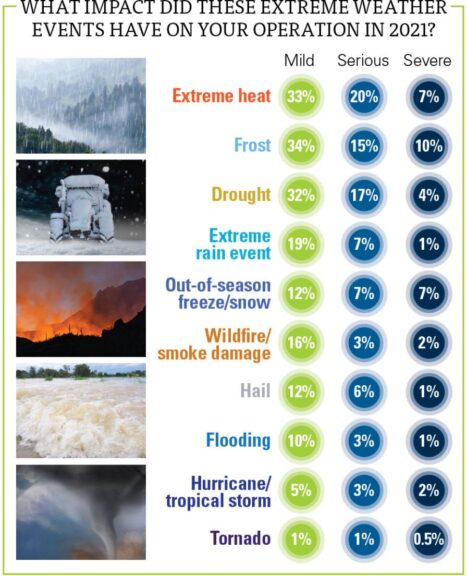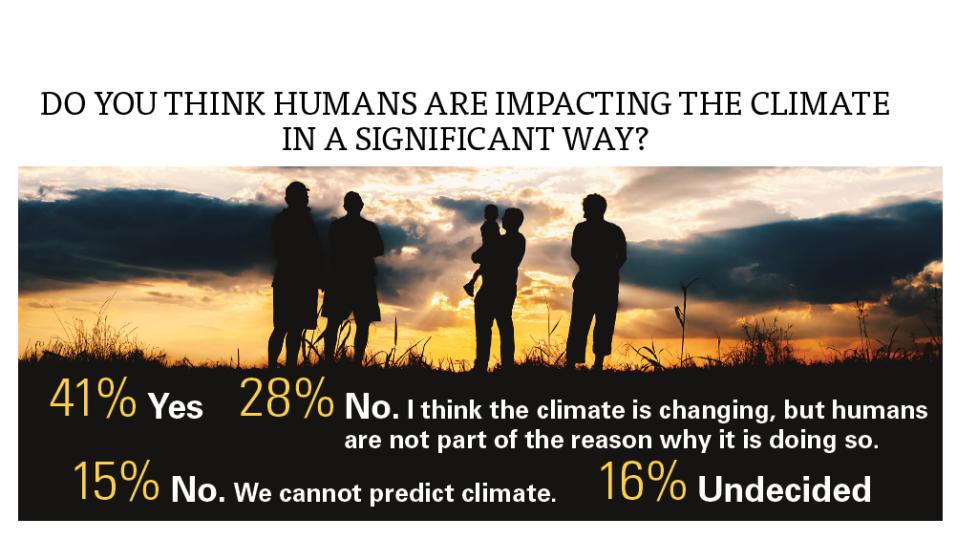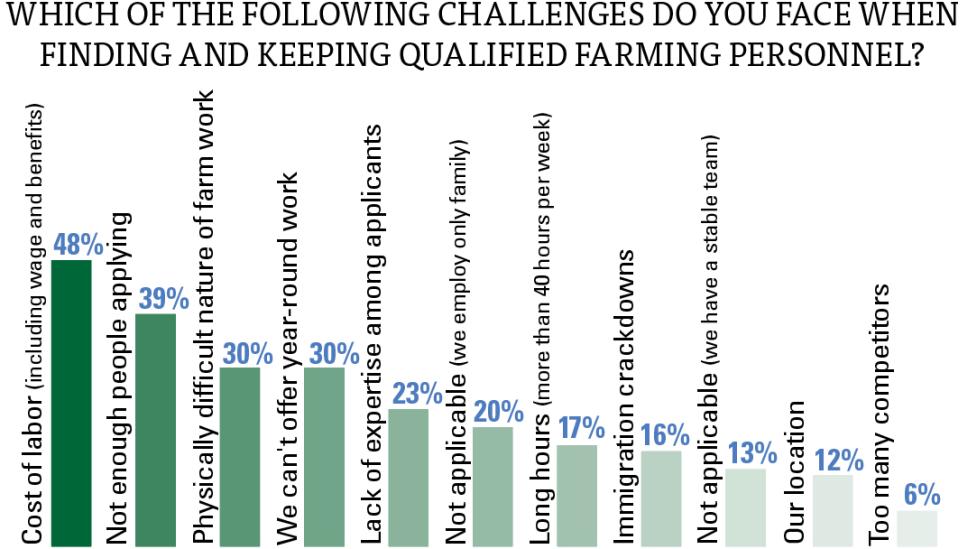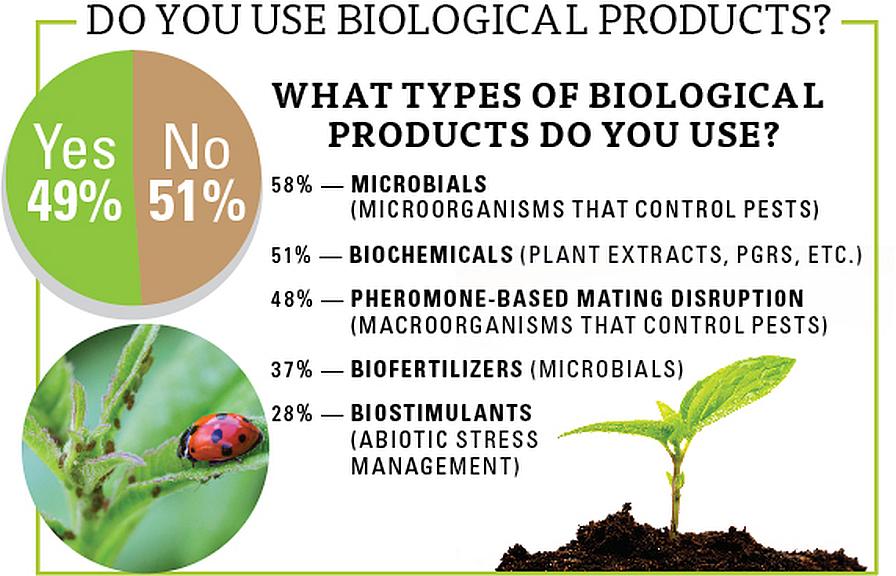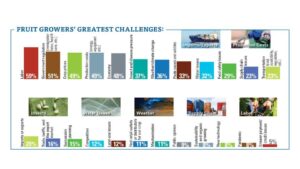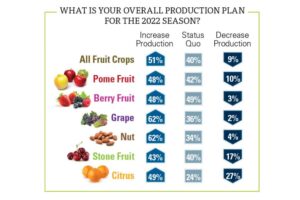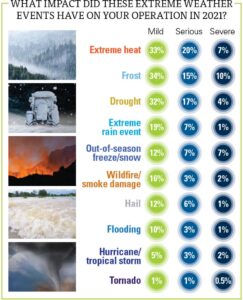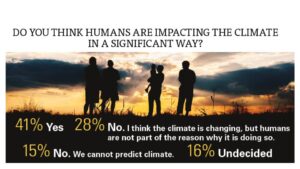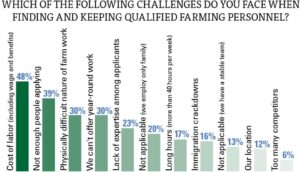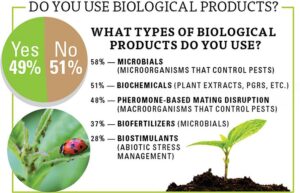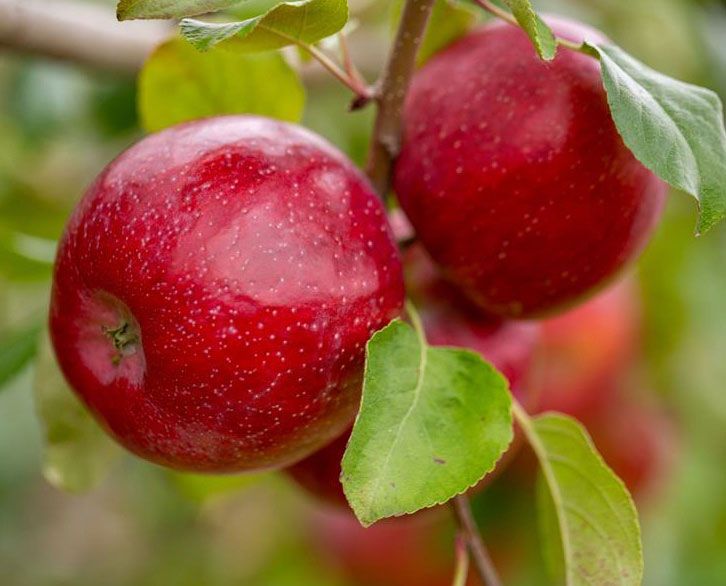Clearing up Misconceptions for the Fruit Industry
It’s rare we take steps to correct our grower/readers. After all, you are the sources for a lot of our content. As part of our jobs, we regularly contact Extension advisors and researchers. Like many interested growers, we attend conferences, but we are able to attend many more that cover a far wider range of crops, farming strategies, and so forth. We have the time to do research, something most growers — who work far longer hours than most Americans, especially in-season — don’t have the time to do. So I’d like to start by clearing up a few misconceptions about certain issues that came up in American Fruit Grower’s State of the Industry survey.
Labor/Immigration — Many growers bemoan the labor shortages that seem to be getting worse year after year, and who could blame them? But many believe the shortages stem from the fact that people just don’t want to be farm workers anymore. That may be true, especially if you’re talking about people who have no experience in agriculture and quickly find out that it involves hard, hot, dusty work.
But it’s not necessarily true of the traditional source of agricultural labor in the U.S. — Mexico. What a lot of people fail to realize is Mexican birthrates have been declining at an even faster rate than that of the U.S. According to The World Bank, in 1960 there were 3.7 babies per woman in the U.S., about half what the rate was in Mexico, 6.8 babies per woman. Incidentally, all the people born that year are now past the age of 60, which is getting to be a tough age for heavy farm work.
However, now the situation is far worse. In 2020, there were 1.6 babies per mom in the U.S., but Mexico is fast catching up, and is now down to 2.1. That’s fewer than one-third of the babies born in 1960. So the key problem is not that most of the Mexican descendants don’t want to do farm work; it’s that they were never born.
Precision Agriculture — Many people in this field believe a term like “Digital Agriculture” is a better, more accurate description of this technology and would help dispel long-held notions that it is new and unfamiliar. After all, specialty crop precision applications (apps) are beginning to match the row crop innovations that gave precision farming its start way back in the 1980s.
The most important point many may not realize is that our smartphones and computers give us access to a lot of digital apps that don’t cost anything at all. Again, I understand this, as it does take a little time to investigate. But you may find that like many of your counterparts, it will save you time. Indeed, that’s the goal of any halfway decent software developer. One grower in our survey even gave an example of an app he finds extremely useful and is free to use.
Climate Change — Our company’s mission is “to be the trusted partner empowering the business of global agriculture to grow a better world,” and as such, we believe in sound science. I learned that way back at the turn of the millennium, when the Food Quality Protection Act (FQPA) was being debated, and we embarked on a campaign based on sound science to help shield growers’ crop protection toolboxes.
We take the same approach to climate change. While about half the growers surveyed each year believe it is not manmade, according to NASA, 97% of climate scientists agree that humans are causing global warming and climate change. But it’s clear that it has become a political issue — bordering on a rock fight — and we don’t take political sides, as evidenced by our FQPA stance. We think it’s advisable to stick to the facts. Agriculture is a science, after all.
Scroll the gallery above for some interesting takeaways from this year’s State of the Fruit and Nut Industry survey.




